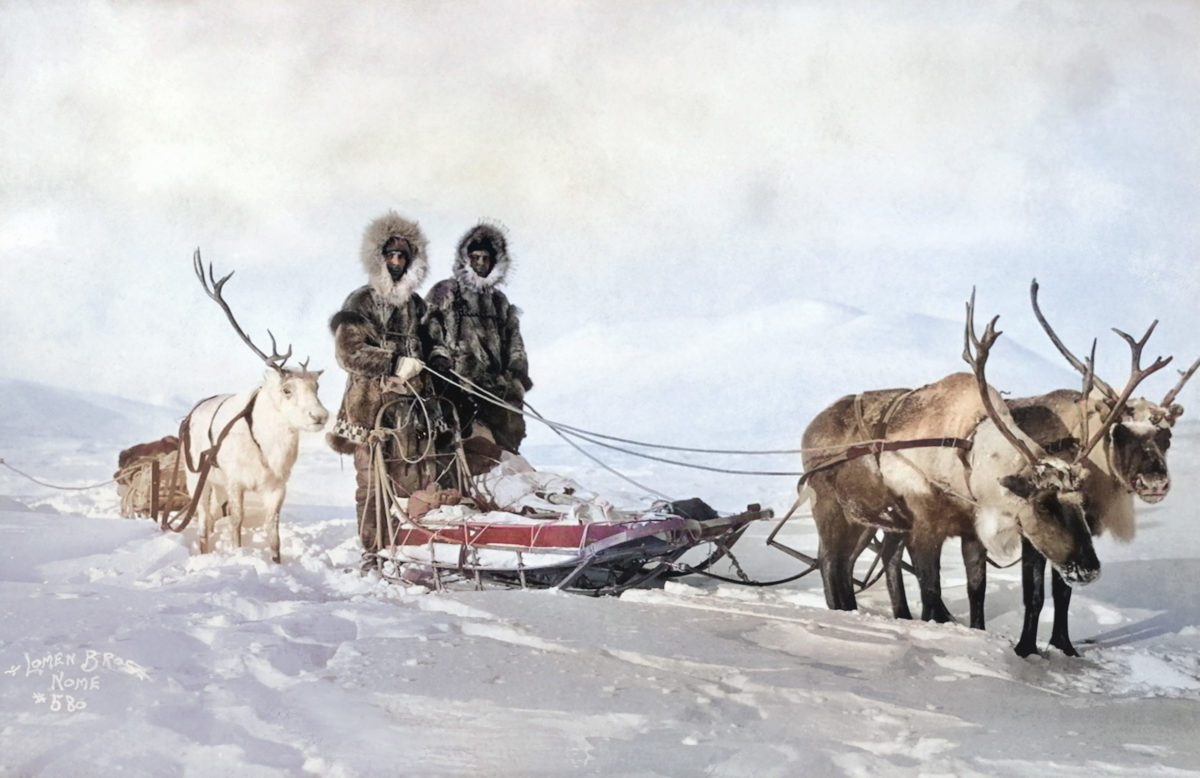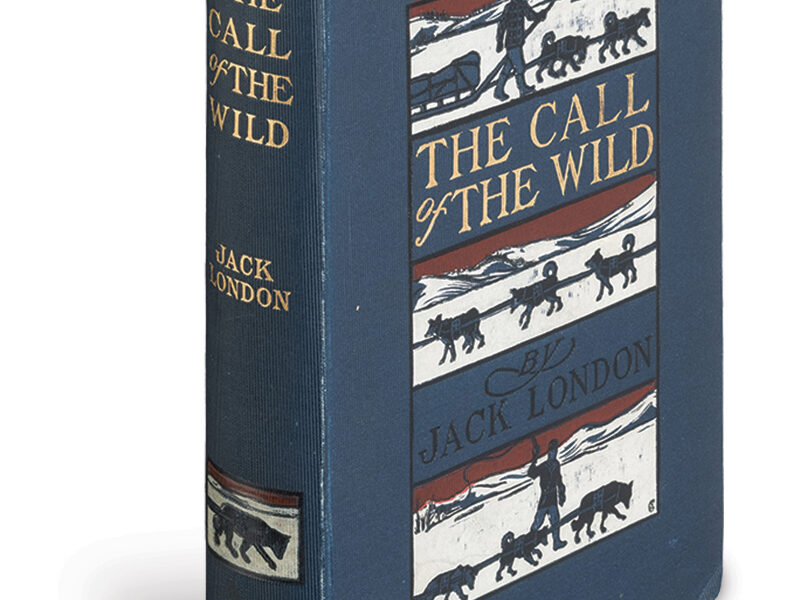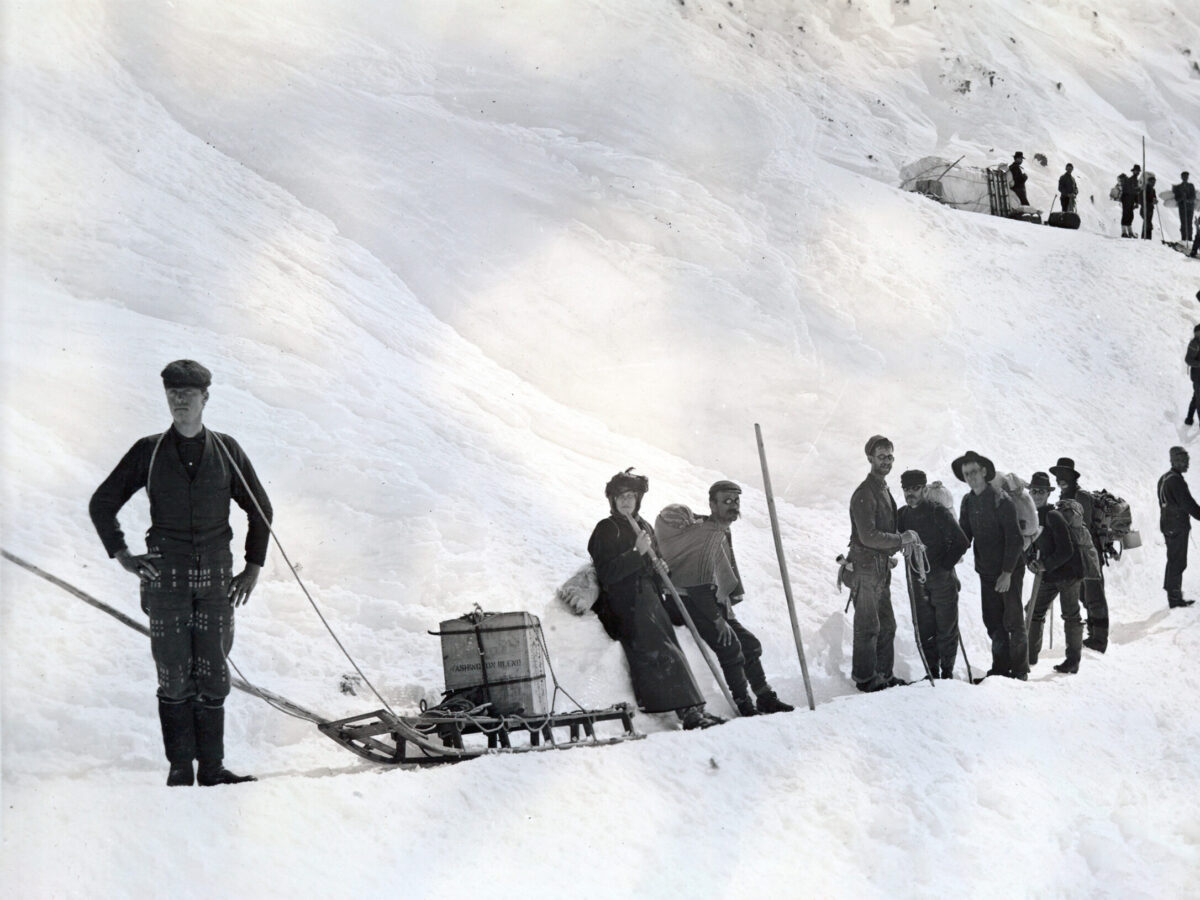In the 1897 edition of the annual Eskimo Bulletin, between a sales ad for walrus heads and word of the discovery of ancient Eskimo armor made from iron slats, appeared the following news item:
“The success attending this third year of the mission herd of domestic reindeer at the Cape [Prince of Wales] speaks well for the faithfulness and skill of our Eskimo herders, all of whom are Christians.…Each of them has driven more than 500 miles during the winter.”
The author and publisher of those lines, Congregational missionary William Thomas Lopp, briefly served as superintendent of the District of Alaska reindeer station in Teller. The driving he mentioned referred to reindeer-drawn sleds whose drivers balanced on the runners in the style of dog mushers.
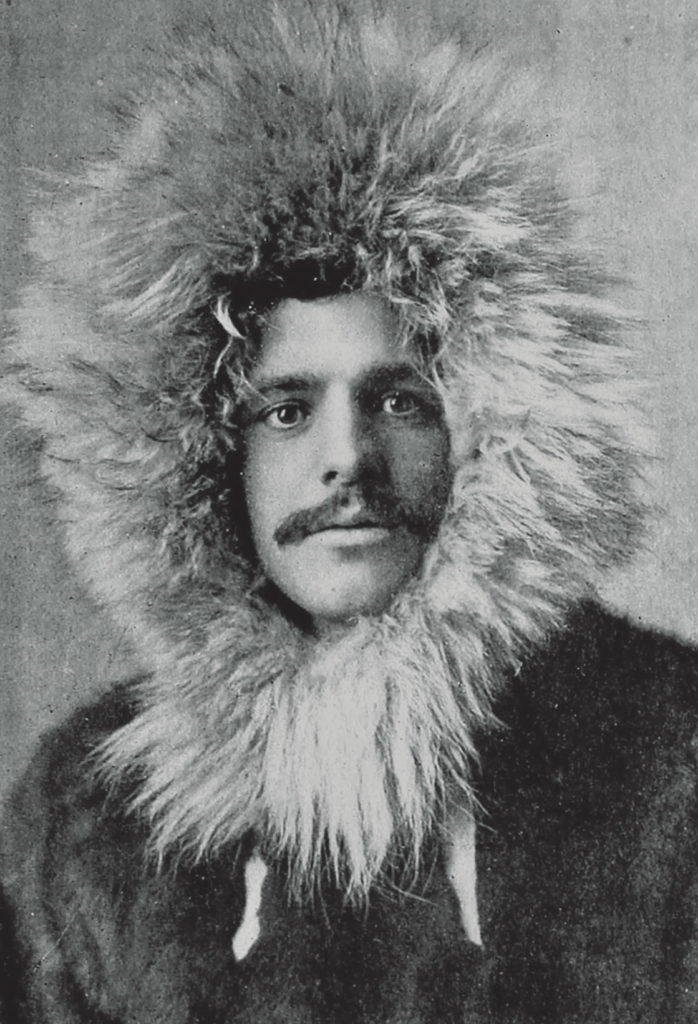
On Independence Day five years earlier, amid a flag-raising ceremony, cheering onlookers and a herd of 53 Siberian reindeer, district officials had opened Teller Station in Port Clarence Bay, a large, sheltered bight east of the Bering Strait. Those animals laid the foundation for a population of reindeer on the Seward Peninsula that would peak at 640,000 animals and support a booming industry that inexorably shaped the welfare of the region’s Alaska Natives.
By century’s end commercial hunting had depleted whale, walrus and caribou populations on the peninsula, and starvation haunted the local Iñupiat, an ethnic group closely related to Canada’s Inuit. Believing “God blesses aggressiveness,” the Rev. Sheldon Jackson, a Presbyterian minister, missionary and Alaska’s general agent of education, repeatedly sailed to Siberia in 1892 and imported 171 reindeer to feed the Iñupiat and provide them with livelihoods. Escorting that first shipment were four Chukchi Siberian herders he’d employed as instructors. Iñupiat flocked from hundreds of miles away to see what the missionaries at Teller were up to. Their intentions were implicit in The Eskimo Bulletin and explicit in Jackson’s reports to the federal government. The reverend—who stood just 5 feet tall but was colossally ambitious, egotistical and often tactless—considered reindeer “an important factor in the civilization of the Eskimos.”
Iñupiaq chronicler Inez Ayagiaq Black instead recalled how the newcomers’ dealings unraveled the cultural fabric of northwestern Alaska Natives. “When the young men started working, their lifestyle changed,” she said. “They didn’t eat only Eskimo food. Their clothing changed. They didn’t use winter furs all the time, like the fur pants they used to wear.”
Jackson taught Iñupiat of both sexes English, math and domestic skills to prepare them for doing business with whites. Consider, for example, the following passage from a mission school language lesson sheet:
We-mok has 10 deer.
They are big deer.
Some of them are fat.
Four of them are sled-deer.
Printed below it were verses from abolitionist writer Julia Ward Howe’s Battle Hymn of the Republic praising the fearful “grapes of wrath” and the beautiful lilies in which “Christ was born.”
Tensions flare
Underlying Jackson’s agenda was his generation’s overarching belief in Manifest Destiny. Reindeer would not only turn hunters into herders, he thought, but also “utilize hundreds of thousands of square miles of moss-covered tundra…and make those now useless and barren wastes conducive to the wealth and prosperity of the United States.”
Yet for millennia such “barren wastes” had sustained people who were neither ranchers nor miners nor farmers. The North Country animals (fish and sea mammals) were their crops. “Anytime that we wanted an ‘apple,’” recalled Iñupiaq leader Eben Hopson from Utqiagvik (formerly Barrow), “we went out and got it. We got what we wanted to live on, got what we needed.”
In place of that carefree subsistence lifestyle those Iñupiaq apprentices selected by the mission instructors received five years of schooling, room and board included. His first year an apprentice earned the loan of two female reindeer (and any offspring they bore), the second year five, the third and each year after 10. At the end of five years, if judged adequately skilled, each was loaned enough reindeer to increase his herd to 50 head.
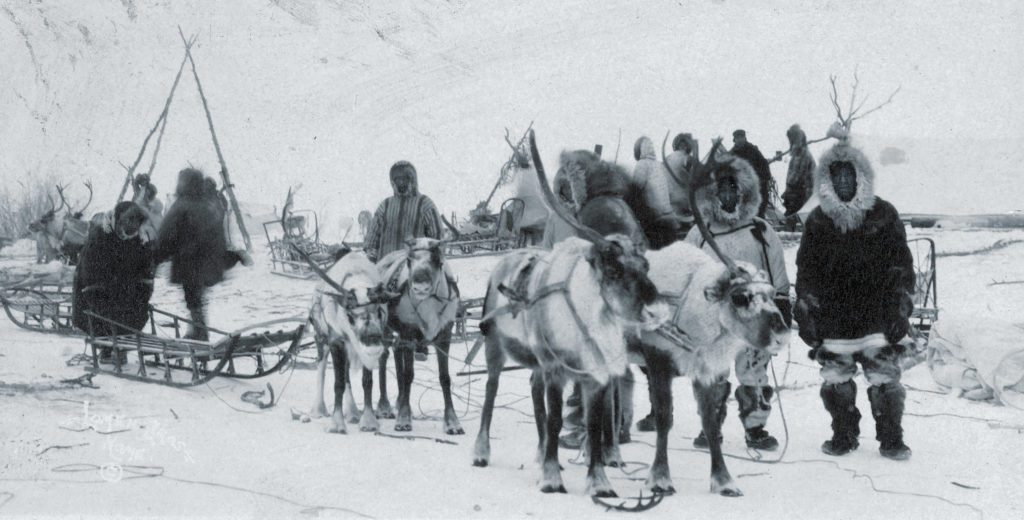
From the outset tensions flared between the missionaries and their Chukchi instructors. Among other “transgressions,” when the Chukchi were thirsty, they would lasso reindeer cows, kneel and drink directly from their teats, quaffing milk, Jackson observed, “with as much enjoyment as if it had been pure nectar.” More offensive still was their practice of leading the salt-loving reindeer by marking the ground with streams of urine poured from a sealskin bag. To missionary sensibilities such behavior would do nothing to help civilize the Iñupiat.
In 1894 the exasperated missionaries recruited 16 Saami (seven herders and their families) from Lapland to replace the Chukchi instructors. A clause in their contract bound the Saami to behave “orderly and decently and to show discipline.” Each brought his own sled and herding dogs and would receive 100 deer for three to five years of service. The Iñupiat soon warmed to the “Card People,” as they dubbed the Saami, whose traditional curled toe boots and Four Winds hats reminded them of the garb of playing card jokers, jacks and kings. But the trainees continued to chafe at their subordinate status, the monotony of herding (compared to hunting or fishing) and the lack of immediate payback.
Ironically, considering Jackson’s stab at acculturation, the need to continually shift reindeer to prevent overgrazing required the Iñupiat to lead more nomadic lives than they had as hunters and fishers. Shadowing the herds all summer, they walked or jogged up to 30 miles daily. “The deer run the herder,” Saami instructor Andrew Bahr said. Iñupiaq herder Chester Seveck, who tended reindeer for 46 years, summed up the herders’ existence. “We keep moving camp every 10 days or two weeks to another grazing ground in wintertime,” he recalled in his clipped English. “In summertime we keep reindeer on the coast near ocean side where flies and mosquitoes not so many.”
In the winter of 1897–98 the owners of eight whalers trapped in an ice field near Point Barrow appealed to President William McKinley on behalf of their 265 stranded crewmen. As it was too late in the year for the U.S. revenue cutter Bear to push through the pack ice, the rescue party disembarked at Cape Vancouver and traveled overland, first stopping by Teller Station to purchase a herd of reindeer—food on the hoof. In what became known as the Overland Relief Expedition they were to drive north “40 tons of meat.”
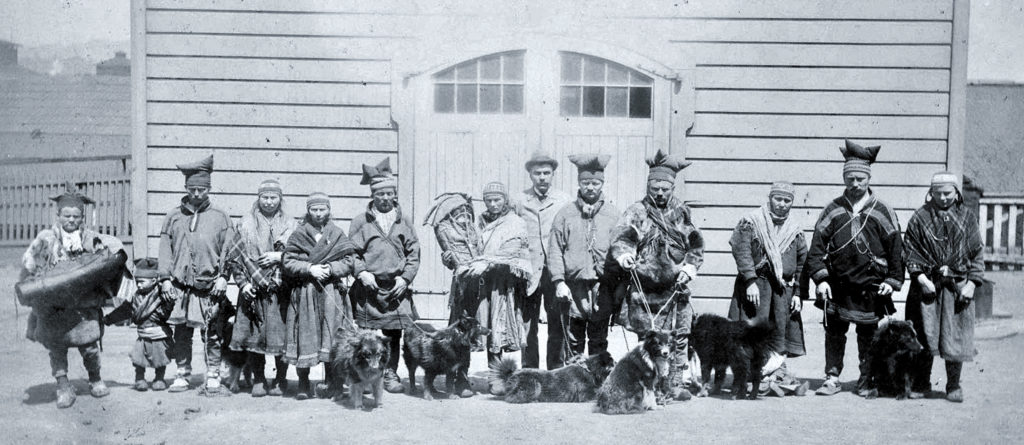
Six men—including officers from Bear, station superintendent Lopp and native herder Charlie Antisarlook—set out for Point Barrow in mid-December. Picking up more Iñupiaq herders along the way, they sledged provisions 1,500 miles by dog and deer while the men snowshoed and skied. As they crossed exposed Kotzebue Sound, they had to cut steps into pressure ridges and burn several sleds to keep warm. Approaching North Slope villages whose residents had never encountered reindeer, Lopp’s men clarified that the animals were not caribou to be hunted. After suffering blizzards, frostbite, polar bear attacks, 70-below temperatures and snow blindness, the men reached the stranded crews at Point Barrow by late March 1898, having lost only one-sixth of the herd.
That same year, with Nome in the grip of gold fever, outlying fortune seekers clamored for meat and regular freight and mail delivery. To supply their needs, Lopp and his herders established a “reindeer express” between Nome and the mining camps in the York Mountains. The first government mail route to St. Michael, a Yukon River gateway to the Klondike, opened in 1900. Draft reindeer quickly surpassed sled dogs, as the former grazed freely, while food for the latter had to be bought, fished for or shot and then carried. Hauling up to 300 pounds each, mail service reindeer could cover 30 to 50 miles in a stretch. The animals rested at way stations, pawing lichen from beneath the snow. In a land of few trees, makeshift fences of burlap, willow or slabs of lake ice easily held them. Some traveled 6,000 miles in a single winter. That said, most Iñupiat preferred dogs, as reindeer kicked up snow into a driver’s face and tended to slip and fall on glare ice. One storm toppled reindeer and overturned loaded sleds like toys, and at least one Saami mailman froze to death.
Arrival of the Lomen family
Around the turn of the century the winds of opportunity blew a particularly enterprising family into Nome. In June 1903, having spent a working vacation there at the height of the gold craze, Carl J. Lomen and his father, Judge Gudbrand J. Lomen, of St. Paul, Minn., moved to town. Carl’s mother, four brothers and sister soon followed. As shrewd hawkers of reindeer meat and the Christmas holiday, the Lomens would rise to become Nome’s wealthiest family.
Carl’s initial reindeer sighting paints him as something of a citified “dude,” for while he was crossing the tundra near Nome in the summer of 1900, a herd stopped him dead in his tracks. Ignorant of the habits of reindeer, he feared they might attack.
By the time of his family’s move chances to score still abounded in the territory’s most-populous city. In 1908 the Lomen brothers bought a photo studio, stocking it with cameras and glass-plate negatives acquired from other photographers. They soon mastered the craft while learning to keep their gear and fingers functioning at subzero temperatures. Cashing in on the soon-to-be-territory’s aura and newfound popularity, the brothers sold their images as postcards and to various newspapers and scientific publications. In 1914 the family launched the Lomen Co., a meatpacking business stocked with 1,200 reindeer purchased from an aging Saami. Within a couple of years the enterprise was shipping meat to the Lower 48.
Carl Lomen, who boasted of the family’s “many pleasant relationships with the native people,” pledged that he and his brothers represented no threat to local herders, as they’d focus on national markets. By then, however, most miners had left the region, leaving no significant local buyers. Lacking the funds to build slaughterhouses or underground cold storages—natural freezers that took advantage of permafrost—Iñupiaq herders couldn’t compete on the national stage, not that they had any stateside connections. Conflict over prime rangeland mounted as Lomen came to control the best grazing grounds, charging native herders a use fee and collecting a herding fee for each Iñupiaq reindeer that got mixed up with his animals. While the Lomens did hire native herders and buy their excess steers, such were largely token gestures to maintain goodwill. Regardless, the natives were far from throwing in the towel. With seed stock from the firmly established mission herds, additional Iñupiaq reindeer stations sprung up in Iliamna, Barrow, Kivalina, Nulato and as far inland as Bettles.
In his 1954 memoir Fifty Years in Alaska Lomen gave patronizing due to native resilience and good humor. “Civilized men,” he wrote, “would become despondent living under like conditions, but the Eskimo meets them lightheartedly. He exhibits no concern for the morrow.” Pages later, however, the entrepreneurial meat-packer belied his true feelings with a quote from Iñupiaq herder William Allokeok of Shishmaref: “If you wish a good living from your deer, you should think and plan how to care for them. If you don’t, your herd will decrease.”
Unfortunately, no amount of skill and dedication could guarantee an Iñupiaq herder’s success. By 1896 Jackson had changed the apprenticeship terms so that no animals could be earned during the period of instruction, and native herders could no longer expect the loan of a starter herd on graduation. The new rules also specified that when an Iñupiaq herder died, half of his herd reverted to the mission.
Lopp and others sincerely concerned about native livelihoods raised the alarm, prompting a 1905 Interior Department investigation of the mission stations. It found that the missions, their supervising Scandinavians and the government itself, not native herders, owned most of the 10,000-plus head then in Alaska. Jackson, singled out for his conflicting interests as the district’s agent of education and field agent of the Presbyterian missions, resigned, and a new policy was implemented to place more reindeer into native hands. Instead of having to qualify through apprenticeships, Iñupiat could simply purchase reindeer from fellow herders, though they were still not permitted to sell female breeding deer to nonnatives. Only through a legal technicality had Lomen been able to buy his original herd, as no sales restrictions had been imposed on nonnative herds.
Alas, the government reforms benefited few native herders, and most of those only temporarily.
Queen of Reindeer
Among the few truly successful native herders was “Sinrock Mary.” Born Changunak in 1870 to an Iñupiaq mother and a Russian trader father, she was raised in bustling St. Michael. Growing up trilingual, she worked as a linguist and interpreter for Jackson and legendary U.S. Revenue Service Captain Michael A. Healy before achieving fame herself as the “Queen of Reindeer.”
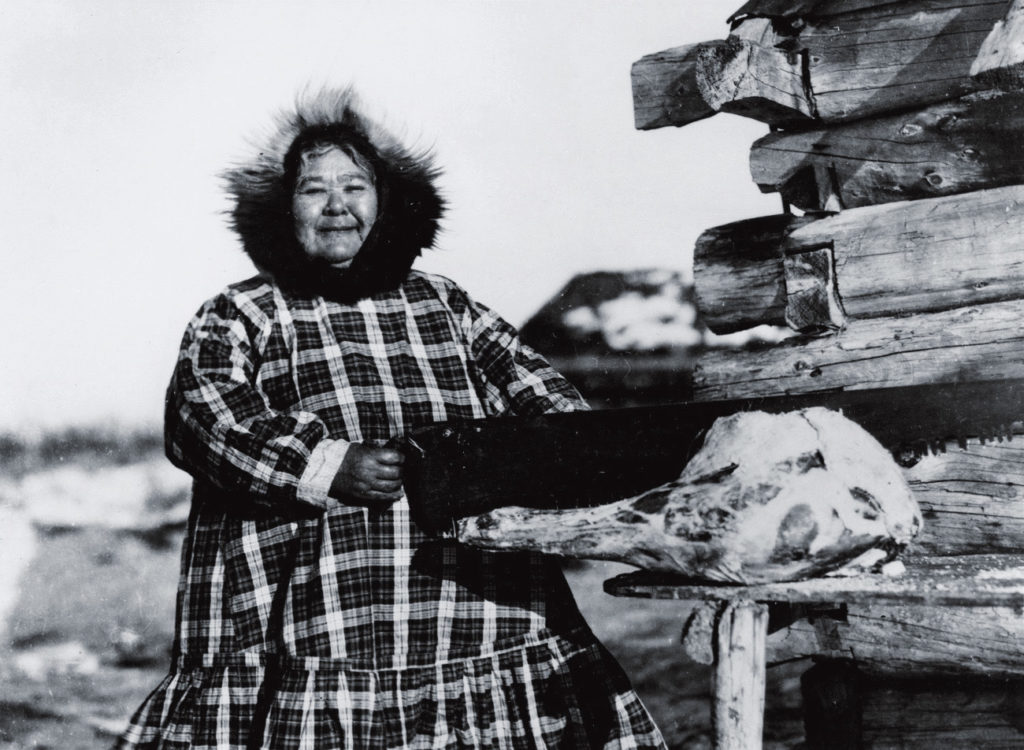
In 1889 Mary married Charlie Antisarlook—the Teller Station herder who a decade later would join the Overland Relief Expedition. The couple moved to Cape Nome, where Charles had established a modest herd, the first owned by an Alaska Native. When her husband succumbed to measles in 1900, Mary worked diligently to maintain the herd, selling meat to local businesses and the Army station. Her second husband wasn’t interested in reindeer, so Mary adopted 11 children, among them little ones the epidemics had orphaned. She transformed them and other Iñupiat into “deer men” able to manage their own herds.
At one point “Queen Mary” reigned over the largest herd in the North Country. Through her children she also managed to uphold such Iñupiaq traditions as gathering berries and greens, fishing and preparing skins for sewing. Conniving to cheat her out of her inheritance, rumrunners and drifters slurred the stately, curly-haired woman, threatened and sued her, shot at her deer to scatter them, killed and left some rotting on the tundra, and proffered her liquor to cloud her judgment. One Swedish schemer pretended to be her third husband, while relatives of her dead husband, inflamed with a new kind of fever—the lust for unearned wealth—tried to disown her, stating that Iñupiaq inheritance rules favored males.
Changunak had long witnessed the effects of greed, disease and lawlessness. Miners staking claims within grazing ranges often destroyed the natural reindeer and caribou forage by burning off vegetation. Scores of other reindeer were lost to rustling. With the proliferation of Nome honky-tonks and home brewing, alcoholism became rampant. The encroachment on native hunting and fishing grounds brought new diseases—smallpox, influenza, measles, etc.—to which Alaska Natives had little resistance. By century’s end more than half the native population in northwestern Alaska had died. According to Sister Frances Kittredge of the Cape Prince of Wales mission, whose sister Ellen had married Teller Station superintendent Lopp, hardly any Iñupiat over 50 years old was left, and few younger than 5. “There is hardly a family where someone is not gone,” she wrote to her mother.
A 1916 influenza epidemic practically wiped out Sinuk, aka “Sinrock,” the village from which Mary took her nickname and where she tended her herd. Lomen, who paid his helpers in cash, lured ever more herders away from the widow, who could only pay in reindeer and whose herd withered away in the absence of competent care.
“The deer is just like money”
In 1915, to better integrate herding into Iñupiaq culture, Interior’s Bureau of Education began organizing weeklong annual fairs in centrally located settlements. As described by Lomen, these were splendid affairs, versions of Rocky Mountain fur rendezvous that echoed the ancient trans–Bering Strait barter gatherings at Sisualik, a spit near Kotzebue. Clanging brass bells and the old man grunts of sled deer announced the arrival of delegates representing herds from all points of the compass. The herders wore fine costumes, while harnesses blazed with dangling yarn pompoms, and hand-carved walrus ivory buckles and clasps fastened the straps.
At times the pageant resembled a fashion show. Pukiq, snow-white fur from the animal’s belly or throat, was especially valued. It looked dashing on chocolate-colored summer hides or in contrasting panels or inserts of geometric motifs, like checkered parka hems. White deer leg skins made for fancy mukluk boots. Surviving photos of duotone skin rugs, whose designs mimic Navajo weaving, hint that some items were meant for collectors or other commercial markets.
The fairs adopted a flag—a red reindeer on a white field bordered in blue—which snapped in the arctic breeze beside the Stars and Stripes. Attendees field-dressed animals, cooked, shared stories and sang. “They had races using one sled deer, then two sled deer and then four sled deer and eight sled deer,” longtime herder Seveck recalled. There were shooting and heavy-pull contests (with 1,600-pound loads of sand), men’s and women’s snowshoe races, and bow drill fire-starting and snow-melting competitions. In one popular rodeo contest a man roped and then harnessed a feisty bull reindeer, drove a distance and then sped back to the start. When herders wanted to perfect their throwing skills without disturbing their grazing animals, one of their own would play the target, scampering about with antlers atop his head. Another amusing winter exercise for ropers, Ellen Lopp wrote in a letter, “was to go to a long hill, get some children to coast down on sleds or barrel staves and lasso them as they went sliding down.”
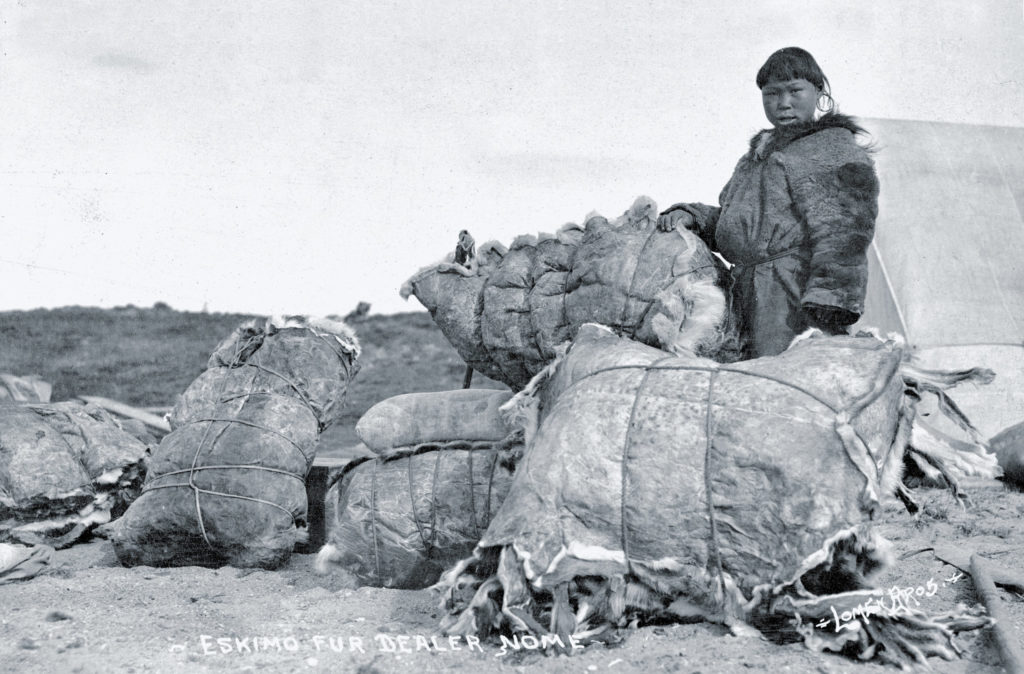
Fall and spring roundups likewise were social events. Families camped at the corrals and chipped in on such tasks as separating out the respective herds, choosing steers for future draft duty and castrating newborn calves. Castrating calves allowed selective breeding and improved the meat of steers that skipped the fall rut. It also made males more docile for pulling sleds. A family culled its herd for food and clothing and tallied how much it had grown. As cows sometimes bear twins and calve annually after becoming yearlings, well-serviced herds could swell by more than a third every spring. Like the Saami, the Iñupiat ear-notched reindeer for identification, as their fur is too thick for branding.
Exponential growth. Investment and interest. Supply and demand. By the late 1920s many Iñupiat had joined the capitalist venture. For the first time they owned live animals individually. “The deer is just like money,” herder Cudluck Oquilluk aptly put it.
And therein lay the seed for the industry’s demise. Despite Lomen’s salesmanship, his attempts to sell “America’s New Health Meat” to a nation raised on beef, mutton and pork yielded only modest results. Seeing their returns threatened by reindeer meat, the big beef producers fought the Lomen Co.’s every effort to ramp up sales. Reindeer hides earmarked for glove making fetched good prices at Seattle auctions, and thousands of reindeer were slaughtered for their leather alone. As outside markets collapsed, people fed excess reindeer meat to dogs or used carcasses to bait fox traps.
More from Alaska
The Depression and mysteriously crashing herds—a “great die-out” between the 1930s and ’50s—doomed lucrative herding in Alaska. A flurry of protests from native herders precipitated the 1937 Reindeer Industry Act, which transferred all nonnative herds and equipment to the Bureau of Indian Affairs and, therefore, to the Iñupiat (until 1997, when a court decision reopened the industry to nonnatives). Lomen in particular had been a target of Interior Department investigations for about a decade. At the liquidation of his depleted herd in 1940 the government paid just $3 to $4 a head, whereas in the industry heyday a reindeer had sold for upward of $65. “By the late 1930s the Eskimos of Alaska had taken both legal and cultural control of what was originally designed to be a project of assimilation,” environmental historian Roxanne Willis observed.
Precipitating a crash of the Seward Peninsula herds in the winter of 1938–39 were wolf kills and losses of reindeer the Iñupiat believed had tired of being herded and wandered off to join migrating caribou. Seveck had vivid memories those weeks, the twilight of an era. “Three big herds of reindeer follow the caribou and lost completely,” he recalled. “The caribou very wild and travel day and night. We must let them go because we could not catch them. They too fast for us to follow.”
The last great trail drive left Kotzebue Sound in 1929, an epic five-year trek plagued by wolves, storms, deserting Saami herders and mosquitoes that stampeded reindeer into the wilds. The Canadian government had contracted with Lomen to deliver a herd of 3,000 reindeer to the Mackenzie River delta, as officials there also wanted reindeer stations to boost native economies. But herding also failed to root deeply in Inuit culture.
Alaska’s Iñupiat and their Yup’ik neighbors, who’d adapted to changes in nature over millennia, were not particularly upset by the reindeer’s disappearance. The endeavor had brought more toil than reward, and many men gladly spent more time with their families again, embracing ingrained, engaging subsistence.
Interviewed at age 83, Seveck reminisced about what the ex-herders sought to reclaim, a time before businessmen came into that country. “Many Eskimo people were old ages, brave and long life,” he said. “Never sick, only dying by accident and starvation. They works together. They hunt together to help one another. They divided equally things among themself.”
Michael Engelhard, who lived briefly on Lomen Avenue in Nome, is the author of Ice Bear: The Cultural History of an Arctic Icon. For further reading he recommends Saami, Reindeer and Gold in Alaska: The Emigration of Saami From Norway to Alaska, by Ornulv Vorren; Ice Window: Letters From a Bering Strait Village, 1892–1902, by Ellen Louise Kittredge Lopp and William Thomas Lopp; The Eskimo and His Reindeer in Alaska, by Clarence L. Andrews; and The Yukon Relief Expedition and the Journal of Carl Johan Sakariassen, edited by V.R. Rausch and D.L. Baldwin.
GET HISTORY’S GREATEST TALES—RIGHT IN YOUR INBOX
Subscribe to our HistoryNet Now! newsletter for the best of the past, delivered every Monday and Thursday.

